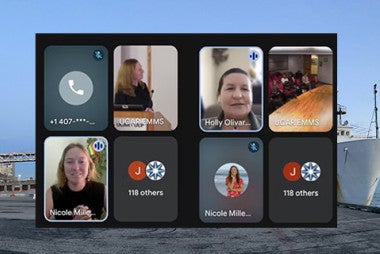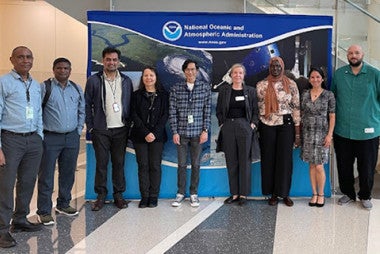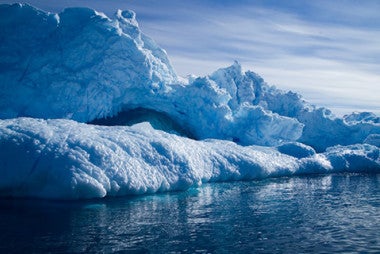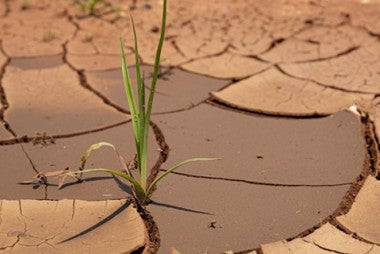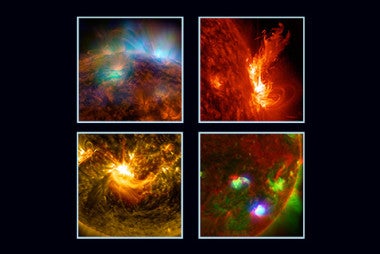NOAA, CPAESS, and partners craft Ocean Carbon Observing Science Plan
In January 2025, NOAA Oceanic and Atmospheric Research (OAR) leadership approved and published its first ever Ocean Carbon Observing Science Plan.
“There have been science plans across the agency dating back many years but within OAR, this is the first of its kind,” says Alyse Larkin, a scientist and program manager with the UCAR | Cooperative Programs for the Advancement of Earth System Science (CPAESS) working with the NOAA Global Ocean Monitoring and Observing (GOMO) team at OAR. Larkin served as the lead on the executive writing team. Joining her from CPAESS were Liza Wright-Fairbanks, CPAESS program specialist with the NOAA Ocean Acidification Program (OAP), and Kathy Tedesco, CPAESS program manager with GOMO.

Alyse Larkin (left), scientist and program manager with UCAR | CPAESS and NOAA GOMO served as the lead on the executive writing team for the Ocean Carbon Observing Science Plan. Joining her from CPAESS were Liza Wright-Fairbanks (center), CPAESS program specialist with NOAA OAP, and Kathy Tedesco (right), CPAESS program manager with NOAA GOMO.
Credit: CPAESS
“Within OAR, we have an Oceans Portfolio and the directors of labs and programs deal with a range of science relating to the ocean but no one was really focusing on the base level carbon observations of the ocean that support all of the various program science,” says Larkin.
Similar to the terrestrial carbon cycle, carbon dioxide (CO2) is continuously exchanged between the atmosphere and the ocean’s surface making the oceans crucial to the global carbon cycle. The ocean mitigates climate impacts by absorbing excess heat and human-emitted CO2 but at the same time, increasing atmospheric CO2 threatens aquatic health and related ecosystems.
The plan highlights an urgent need to “observe and monitor our changing ocean, especially given increasing national and international carbon observing directives on global carbon cycle topics such as greenhouse gas monitoring, ocean acidification, and the emerging carbon dioxide removal field.” (Source.)
Additionally, ocean, coastal, and Great Lakes carbon provide critical information that support the development of future climate projections, adaptation and mitigation strategies, and policies that inform decision makers and advance NOAA’s Blue Economy – the concept that our oceans support leisure activities like tourism and recreation as well as commercial activities like shipping, fishing, and power generation. (Source.)
The approach suggested by Larkin and the executive team – focusing on prioritizing and coordinating scientific goals related to ocean carbon activities – resonated across OAR but also among agency, institutional, academic, and international partners. The importance of the work is evidenced by contributions from more than 40 subject matter experts.
“It was amazing to me how deeply all of the subject experts cared about the topic and how willing they were to commit their time to making this science plan a reality,” Larkin said. Over the course of the year the team received over 1,300 constructive comments on the documents. Rather than a top-down approach, Larkin strove for a process that was more bottom up, providing everyone ample time to review and refine the plan.
The end result was a thoughtfully constructed plan reflecting what OAR, ocean carbon experts, and collaborators consider to be the most pressing research questions along with three ocean carbon goals to achieve over the next decade. It provides a prioritized framework and strategic direction for NOAA ocean carbon research in support of the agency’s mission to understand our natural world and protect its precious resources.
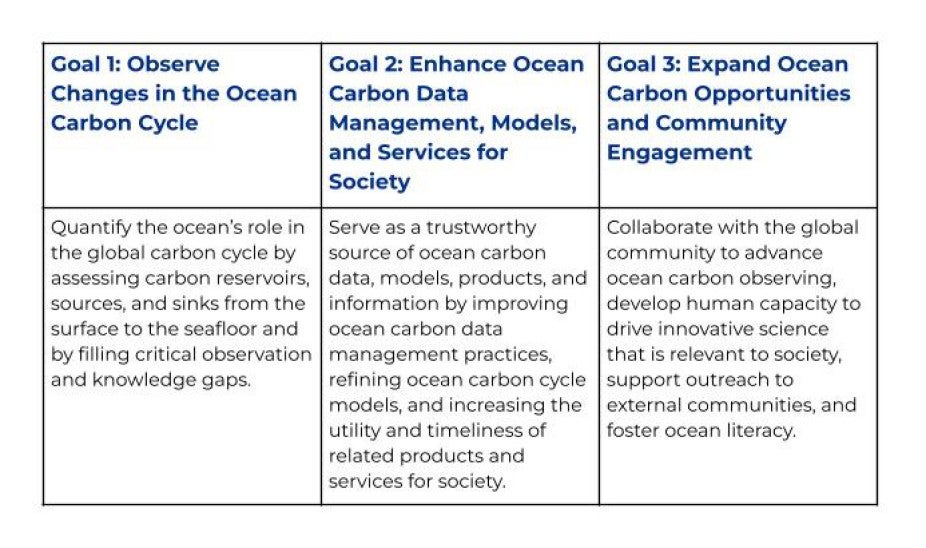
Strategic scientific goals of the Ocean Carbon Observing Science Plan
Credit: NOAA
Before implementation begins, the team will analyze projects that are currently funded by OAR and map them to the goals and research questions of the carbon cycle plan.
“We want to get a better sense of how we might already be investing in the goals, the timeline of those projects, and where the projects fall in the priorities that we’ve gotten from scientists.This will allow us to arrive at a quantitative sense of our investments and make adjustments as appropriate,” says Larkin.
For Larkin, the executive writing team, OAR leadership, and all plan participants, the advantage of this approach is that it offers the ability to measure progress over the 10-year plan period. It also opens the door to collaboration with other agency partners such as the National Science Foundation, NASA, Department of Energy, US Geological Survey and others on topics of mutual interest.

